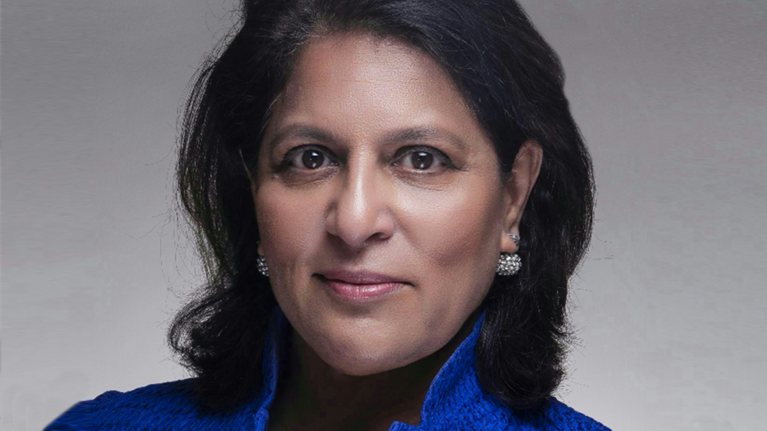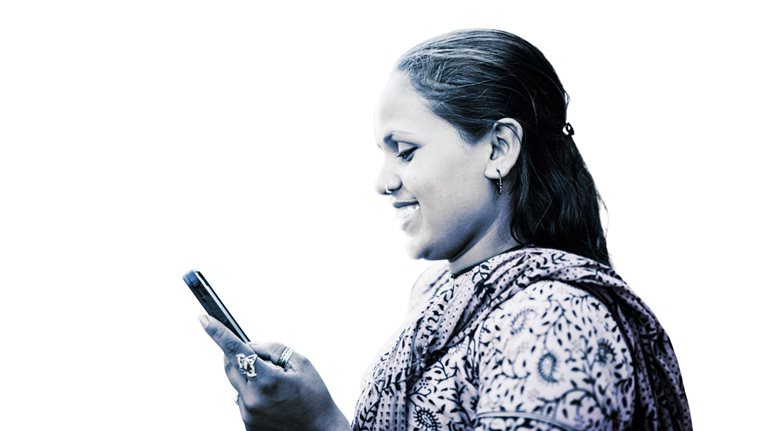Twenty-six years ago, Aditya Puri stepped down as the head of Citibank Malaysia to take charge of a banking start-up in Mumbai, HDFC Bank. Under his leadership, which ended with his retirement in October 2020, HDFC Bank became the highest-valued financial institution in India and the tenth-most-valuable bank in the world, with a record of market-beating performance (Exhibit 1). The 2020 fiscal year saw HDFC Bank notch revenue gains of around 20 percent, as it had done in the previous five years, along with returns on equity of nearly 17 percent—well above the global industry average. Noting that HDFC Bank delivered total shareholder returns of more than 16,000 percent under Puri, the Economist suggested that he might be the “world’s best banker.”
To hear Puri tell it, HDFC Bank’s success comes from keeping its business simple by hewing to its founding principles: customer focus, risk management, technology-led innovation, and a “first among equals” culture. In this edited interview with McKinsey’s Alok Kshirsagar, Puri explains how HDFC Bank brought these elements together to perform strongly for many years.

HDFC Bank's total returns to shareholders have exceeded industry averages during the past ten years.
Chart summary
A line graph shows total returns to shareholders1 since April 2010 for HDFC Bank and for index banks. From 2010 through 2015, HDFC Bank's total returns met or exceeded the index banks' total returns, except for a dip in 2013. From 2015 through 2020, HDFC Bank's total returns consistently exceeded those of the index banks.
Total returns to shareholders, April 2010–November 2020:
- HDFC Bank: 295%
- S&P 500 Banks: 108%
- S&P Emerging Asia—Pacific BMI Banks: 68%
CAGR, April 2010–November 2020:
- HDFC Bank: 14%
- S&P 500 Banks: 7%
- S&P Emerging Asia—Pacific BMI Banks: 5%
Market capitalization of HDFC Bank was $29 billion in 2010, $48 billion in 2015, and $107 billion in 2020.
Chart data
The line graph compares returns at a weekly interval. The following table samples the line graph data at roughly quarterly intervals.
| Date | HDFC Bank | S&P 500 Banks | S&P Emerging Asia—Pacific BMI Banks |
|---|---|---|---|
| April 2010 | 0 | 0 | 0 |
| July 2010 | -5 | -15 | -2 |
| October 2010 | 27 | -13 | 19 |
| January 2011 | 19 | 2 | 20 |
| April 2011 | 24 | 2 | 28 |
| July 2011 | 35 | -6 | 22 |
| October 2011 | 4 | -19 | -11 |
| January 2012 | -2 | -6 | -1 |
| April 2012 | 21 | 8 | 8 |
| July 2012 | 25 | 7 | 5 |
| October 2012 | 44 | 18 | 12 |
| January 2013 | 48 | 13 | 27 |
| April 2013 | 32 | 21 | 25 |
| July 2013 | 30 | 36 | 14 |
| October 2013 | 22 | 35 | 21 |
| January 2014 | 25 | 49 | 18 |
| April 2014 | 44 | 63 | 20 |
| July 2014 | 68 | 62 | 33 |
| October 2014 | 69 | 63 | 32 |
| January 2015 | 80 | 74 | 47 |
| April 2015 | 99 | 68 | 52 |
| July 2015 | 102 | 80 | 57 |
| October 2015 | 97 | 65 | 24 |
| January 2016 | 91 | 62 | 20 |
| April 2016 | 92 | 48 | 20 |
| July 2016 | 114 | 52 | 31 |
| October 2016 | 134 | 72 | 49 |
| January 2017 | 113 | 120 | 41 |
| April 2017 | 171 | 121 | 58 |
| July 2017 | 214 | 135 | 67 |
| October 2017 | 239 | 147 | 80 |
| January 2018 | 260 | 173 | 93 |
| April 2018 | 261 | 168 | 94 |
| July 2018 | 281 | 156 | 80 |
| October 2018 | 227 | 173 | 74 |
| January 2019 | 272 | 125 | 80 |
| April 2019 | 309 | 155 | 98 |
| July 2019 | 350 | 165 | 102 |
| October 2019 | 329 | 161 | 85 |
| January 2020 | 349 | 217 | 108 |
| April 2020 | 195 | 89 | 55 |
| July 2020 | 268 | 98 | 77 |
| October 2020 | 288 | 110 | 63 |
| November 2020 | 295 | 108 | 68 |
Notes
1Includes dividends as well as price returns.
Source: S&P Capital IQ
McKinsey & Company
McKinsey: HDFC Bank is celebrated in India. But I suppose that many readers in other countries will know less about the company’s story. Perhaps you can take us back to the early days, when you decided to join, in 1994. What drew you to the opportunity?
Aditya Puri: The situation in India then was that the foreign banks had the product and the service. And the nationalized banks had the brands, the distribution, and the money. At the same time, you were starting to see the beginning of the telecom revolution, not yet the computing revolution. I thought that if we can get together a bank that can combine the quality of a foreign bank with the scale and reach of a public-sector bank, with the right technology investments, then it would be a winner.
Of course, I knew I couldn’t do it alone. I went looking for people who believed in the story and believed in themselves and, most importantly, people whom the market believed in. We got people from Bank of America, Citibank, UBS, Merrill Lynch. We got people from the regulator. Each one had to believe, because they were giving up a lot. Our salaries were peanuts. Everyone was going to take a risk.
McKinsey: How did the team get aligned on an approach to building the bank?
Aditya Puri: When you are starting off, and you’re bringing people together who know their jobs, you’ve got to recognize that they will come with some idiosyncrasies. They will come with a bit of an ego. And so the only way it’s going to work is if you’re the first among equals and everybody can state their point. Very clearly, up front, we said, “Everybody can say what they want. But the ultimate person we are here for is the consumer. In everything we do, the only way we’ll succeed is if you bring your expertise together to provide a differentiated product to the customer.” I think that sort of gelled the team together.
From there, we defined our target market, and the risk and reward we were looking for, and the technology we would need to deliver a superior product. If you don’t do that, then banking becomes very complicated. Otherwise, it’s reasonably simple.
McKinsey: How did the bank apply that formula at the outset?
Aditya Puri: We developed a standard rule that we wouldn’t bet the bank. We also said that credit would be a separate structure from sales and marketing, to keep credit independent. We decided there’s no point having a credit person if that person is going to report to the sales or business leader, because then sales will always prevail. Constructive tension between these functions worked for us.
We put in the right operating processes. They had rigidity so that you couldn’t go against regulations. They also allowed flexibility to go up the line for exceptions. If a senior individual wanted to approve a loan above the credit limit, they could. First it had to be approved by credit and marketing. If the senior individual signed on that basis, then that person’s neck was on the block, because that individual was taking the final decision. That cut the risk by an order of magnitude. Even when people would appeal to me, I was not willing to override a risk decision, because I did not want to break the “first among equals” culture.
Initially, we went in as a corporate bank for AAA-rated companies, because in AAA, we would have hardly any delinquency. Maybe we didn’t have that final delta of margin. But we did not want to go down the risk ladder. When we started, there was no credit bureau, so we were developing our own risk models. For many years we would not go into the kind of unsecured personal loans, credit cards, and project financing that our competitors were going into, because they did not fit our models. It’s a misconception that you can price for risk. You can price for risk up to a point, but not beyond that. Otherwise, you end up in the subprime crisis. But investors said, “You’re boring.” Even our board was asking at every meeting: “Why are you not doing it?”
McKinsey: You’re doing more of it now. HDFC Bank now offers a wide range of products. How did the bank prevent its growth from creating undue risk [Exhibit 2]?
Aditya Puri: We went on to define the risk-and-reward equation, for each segment, that would enable us to meet our expenses, plan for delinquencies, and assure returns to shareholders. We never lost our focus on a clear target market, risk-reward equation, and culture.
As we were developing our models, we made new kinds of loans on a small scale until we understood the efficacy of our models. Maybe we’d be a little slow to come out with a new product, but it would be a better product. We would do our pilot. If we made a mistake, we’d drop it. But if we got it right, then we’d hit it like there’s no tomorrow. This approach let us get comfortable with new products such as personal loans and credit cards and then scale up rapidly when we had created the conditions for success.

McKinsey: A lot of banking leaders say they want to innovate in a similar way, but they also feel pressure to deliver quarterly results. How did you explain to investors the balance between innovating for the future and doing well each quarter [Exhibit 3]?
Aditya Puri: We have to be a dynamic organization. We need to change every three or four years. Because if you don’t, then you can live on your laurels for another three or four years, but then you will have a problem. And then it’ll be too late. So, even today, we are still changing.
If you are continuously on this cycle where you are changing, then your older businesses become cash cows as you are testing out new ones. We make a lot of mistakes, but we make small mistakes. As you’re testing out new ideas, you are able to figure out when you will break even on them. And you take only those initiatives. And if you have some initiative that could completely transform you, you give [investors] an 18-month projection and say, “Look, at this point in time, we are going to be much better off.”
For the banks who change faster, it’s a winner-take-all situation. Growth is not an issue. I would say, clearly define your target market. Be very clear that your competition is going to come more from the platform companies rather than just other banks. You have to have the right target market, the right technology platform, and, clearly, quantitative filters. Use technology to create value. I don’t see any reason why you should have returns on equity of less than 16 to 18 percent. You shouldn’t have a cost-to-income ratio exceeding 35 percent or gross NPA [nonperforming assets] exceeding 1.4 percent—probably lower.

McKinsey: How has HDFC Bank followed this evolutionary approach in the digital era?
Aditya Puri: I went to Silicon Valley because there were a whole lot of these youngsters who, without saying it, were effectively saying I was a dinosaur: “Now, with this tech, and all that is changing, all banks are going to be blown out of the window.” When I went and met them, it was one of the best things that I did. Because none of them were talking about a technology revolution. None of them were talking about doing the things that the bank does. What they were talking about was using the bank as a service provider, like you plug in for electricity in your house. They would use the internet and the other facilities available for communication in order to deliver a better product to the customer.
So, I came back and said to my team, “Look, we know this business. And the internet, and the connectivity, and the cloud, and all of that is nobody’s private domain. Why don’t we disrupt ourselves?” We took about two months to go through in detail what we needed to change. And as we went into it deeply, we found that we could give almost any kind of loan in ten seconds flat, from the time the guy applied to the time we credited his account. We could also give far more convenient services to merchants accepting payments by card.
Later, we began using artificial intelligence and digital underwriting to give immediate decisions on large working-capital loans for small and medium-size enterprises. That often takes several days at most other banks. Digital and analytics have also enabled HDFC Bank to build partnerships and ecosystems. For example, we started what we call the HealthFirst ecosystem to bring quality healthcare to our customers. We’re forming partnerships, like the one we announced with Apollo Hospitals, to help customers in every part of the country.

McKinsey’s Global Banking Annual Review
McKinsey: Constant reinvention can be unsettling for employees. How did you assure successful people that change would be good for them?
Aditya Puri: You need to understand the importance of enlightened self-interest. You need a very clear definition of what your change is going to do—what it’s going to do to processes, and what it’s going to do to people, and what it’s going to give them for the long run. And sometimes, you have to help people through external changes. This year, with the uncertainty of the COVID-19 pandemic, we came out and said, “Nobody will lose their jobs. You will get paid your bonuses.” We felt this up-front reassurance was important to motivate all 120,000 of the bank’s people.
You also have to empower employees. That’s where most people make a mistake. They say, “I’ve delegated,” but they don’t empower, because they always feel that they can do the job better than everybody else. You probably can. But look at the price you pay. And look at the demotivation you have because you are always saying, “I can do it better than him.” Then he doesn’t feel he’s achieved a thing. When you empower people, you don’t realize how much motivation you give them. Yes, they will make some mistakes. You should have the shoulders to accept those mistakes, and tell them, “Never mind. You learned. That’s good enough.”
Every person, when they touch the customer, should be able to deliver the brand. There will be firsts among equals—people who perform better than the others. Whoever executes best, he or she has to be compensated differently.
McKinsey: You had many executives stay with HDFC Bank for 15 or 20 years. But over the past three years, you brought in ten or so new senior leaders, including leaders from outside your industry. We see that a lot in other sectors, but it’s still fairly uncommon in banking. Why did you choose to bring in people who were new to financial services?
Aditya Puri: I saw that we needed expertise that was missing from our arsenal. The whole game for marketing and sales has changed. Customers are not going to pay a premium, but they want premium service. So we needed digital marketing talent. We needed people who understood campaign management—people who understand that you don’t tally results at the end of the month. You should know every two hours.
For that, we needed people who understood technology and the changes it would bring to the end product. Every time a customer touches us, we needed to be able to market to them—a pop-up based on analytics. We needed the ability to analyze unstructured and unformatted data, and do it very fast. We needed artificial intelligence.
The new leaders from different industries have blended into the culture of the bank, challenging the status quo when needed and teaming well with those who built the bank over the years. We are a bank of stars—not superstars—where people aren’t trapped by their egos.
Would you like to learn more about our Financial Services Practice?
McKinsey: Speaking of new leaders, you recently handed HDFC Bank over to your successor, Sashidhar Jagdishan. How did you manage that transition?
Aditya Puri: People were laughing when we designated Sashi the “change agent” last year. I said, “Look, our change is so dramatic, including change of the CEO, that we need to understand exactly what we are doing. We need people to buy into it.” So we went through the plan. We had complete detail. The last bolt was tightened. And then we took it around the country for feedback. And I must say, a lot of the feedback was better than our own thinking. This also helped people to recognize him. They saw what needed to be done and believed the culture would continue.
The strategy was embedded into the organization. Every month, I was handing over more to Sashi. When my last day came, it was like handing over a set of keys. So, you have to manage a transition in extreme detail, and with a clear understanding that your real success is to leave behind an organization that functions without you.
McKinsey: What’s your outlook for India?
Aditya Puri: I believe that demand for financial services will exceed supply for a long time. Probably we will see a few more bank licenses coming into place. Overall, I feel you will also see a further development of equity capital markets. The attention to equities today is limited even with the reduction in interest rates. If they continue to be low, I think a lot more people will come into the equity market.
I expect strong growth in demand from semi-urban and rural India, where 60 percent of the country lives. It’s ready for change. If we can bring affluence to the top 25 percent, and it becomes the new middle class of India, then that doubles the opportunity for us. It is why we say we will double our business in the next five years. That is possible.
Finally, I have always been bullish on India. I believe our potential is phenomenal. We haven’t always executed in a manner that would let us reach our full potential. But even at 60 percent, 70 percent execution, we are and will continue to be a great market.


